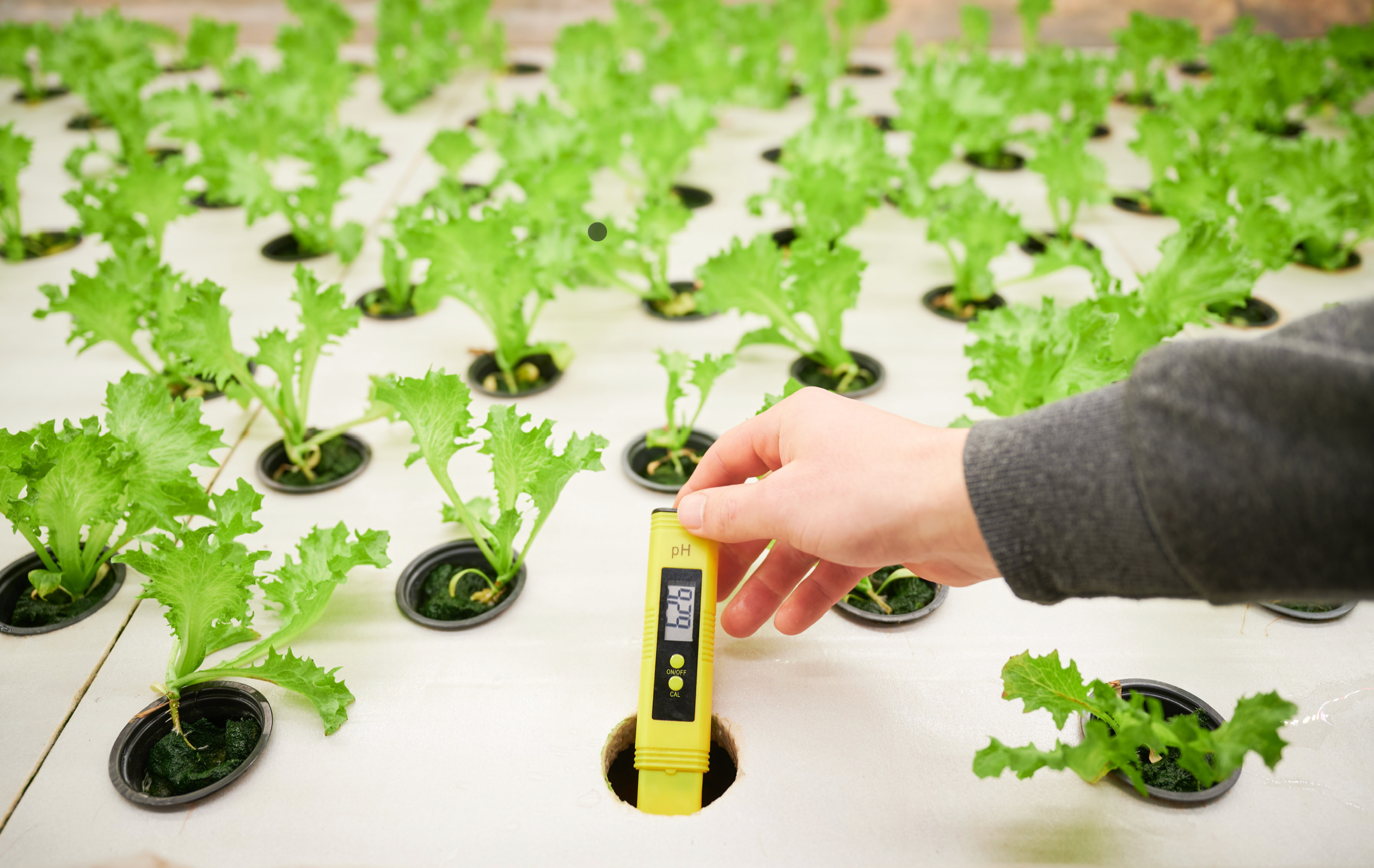Disease Management in Hydroponics

Complete Guide to Disease Management in Hydroponics
Even though plants grown hydroponically are much less likely to get diseases than plants grown in soil, unfortunately, it can still happen. Below you will find a guide to disease management in hydroponics containing list of diseases that can affect hydroponic plants, their symptoms, and how to deal with them.
Fusarium
Fusarium oxysporum is a soilborne pathogen that attacks the root system of plants. Once the growing medium or nutrient solution is contaminated by a fusarium fungus, it will live there forever. If a plant is infected with this, the plant may wilt, turn yellow, and stop growing. Many plants that have fusarium will just die, but others will not grow very tall, and they won’t produce a good yield. Fusarium typically attacks peppers, potatoes, tomatoes, and eggplants/aubergines. This fungus thrives in dry and hot conditions, and it can spread by water, tools, and insects.
Treatment of fusarium has low success rates, so prevention is crucial. Always sterilize your growing medium before using it to plant hydroponic plants. If you transfer plants grown in soil to your hydroponic system, make sure they look healthy and don’t have any signs of fusarium, such as yellow wilting leaves. Make sure to keep your hydroponic system and grow-room clean and sterile. If you experience fusarium fungus, then you should remove all infected plants and sanitize all parts of your hydroponic system with bleach to get rid of this.
Gray Mold
Gray mold is a fungal pathogen—its proper name is botrytis. The earliest symptoms of botrytis blight are often brown spots on leaves and buds or spots of dark color on flower petals. As the disease progresses, flowers and fruits rot, and spots begin to show fuzzy, grayish mold.
If you notice this on your flowers, it’s almost impossible to treat, and my advice would be to pull the infected plants and dispose of them to prevent it from spreading to others. To prevent this from occurring in the future, it’s really important to ensure there is adequate air flow around plants (you can get a fan to help with that) and also that your equipment is being kept clean.
Powdery Mildew/Downy Mildew
Powdery mildew and downy mildew are both fungal infections that cause leaf damage to vegetable plants.
Downy mildew is an umbrella term for a large number of plant diseases. It is caused by fungus-like organisms called oomycetes or water molds. By the time plants show symptoms, it is already too late, so prevention is key.
This disease likes damp and cold conditions. Different plants can have different symptoms; however, one common symptom is yellow spots on the upper leaf surface between the leaf veins. These spots spread everywhere except the veins and eventually turn brown. Plants cannot photosynthesize on these yellow or brown spots, and when the leaf becomes totally brown, it drops. If a plant loses too many leaves, it will die.
If your plants are seriously damaged, remove them, and dispose of them in the trash. You can use copper or neem oil fungicides (which are organic) to control downy mildew in early stages. You can also make a homemade organic fungicide with baking soda. To make fungicide with baking soda, mix 4 teaspoons of baking soda and 1 teaspoon of mild soap with a gallon (3.8L) of water. Mix all the ingredients together, and put the mixture into a spray bottle. Spray all infected leaves top and bottom, and make sure to cover all the leaves with a thick layer of the mixture so that it drips off the leaves. It can be a good idea to spray the entire plant and not just infected leaves because fungus could be hiding where you can’t see it.
Powdery mildew is a fungal disease that affects a wide variety of plants. There are many different species of powdery mildew, and each species attacks different plants. Plants that are commonly affected by powdery mildew include tomatoes, peppers, cucumbers, beans, peas, eggplants, pumpkins, and roses.
Plants infected with powdery mildew look as if they have been dusted with flour. This disease usually starts off as circular, powdery white spots that can appear on leaves, stems, and sometimes fruit. It usually covers the upper part of the leaves.
If your plants have powdery mildew, you should remove all infected leaves, stems, and fruit and dispose of them. There are a few organic fungicides that work well against powdery mildew, including sulfur, lime-sulfur, neem oil, and potassium bicarbonate. Homemade baking soda fungicide works well too.
To prevent powdery mildew, keep an eye on humidity levels. Anything over 60% increases your chances of a powdery mildew infection. Make sure to avoid overcrowding your hydroponic plants. Powdery mildew can spread really quickly among plants that are close together and touching leaves. Keep the temperature in the grow room above 20ºC (68ºF). Powdery mildew thrives in colder temperatures and spreads really quickly.
Pythium
Pythium is a parasite that can cause diseases such as root rot and damping off. If your plants don’t appear to be growing very well, have brown or dead roots, if they wilt, or look yellow, then they could have Pythium. You may be able to use pesticides to clean this up, but it’s better to avoid Pythium in the first place. If you’re using tap water, check it for Pythium before using it in your hydroponic system. If you have an ebb and flow system, then ensuring it’s covered to stop debris from falling into the nutrient solution can help. Cleaning your hydroponic system regularly and thoroughly can help too. You really need to prevent Pythium from occurring because your plants will not grow well otherwise.

Root Rot
If you have too much water in the growing medium, this can cause root rot. It can also happen if the water isn’t aerated enough, or there’s no direct exposure of the roots to the air, or a combination of the two. If your plants have started to wilt or turn yellow, this could be a sign of root rot. Once root rot takes hold, the slime creates an impenetrable barrier on the roots of plants, and they won’t be able to absorb water, nutrients, and oxygen.
Prevention is always better than cure, and there are things you can keep an eye on to prevent root rot. Make sure your nutrient solution is at the right temperature, keep your plants’ roots well oxygenated, keep your system clean, and keep an eye on your plants’ health.
If you do get root rot, you can save your plants if you detect it and treat them in time. As mentioned previously, one of the first indicators of root rot is saggy or wilting leaves. You may also notice a stronger than usual smell coming from your plants. Once you start growing plants, you’ll become familiar with each plant's unique scent, especially if you tend to them daily.
So, if you notice a plant looks fine one day, but it becomes saggy and starts smelling stronger than the rest the next day, it’s highly likely it has root rot. At this point, the plant is most likely worth saving. However, if the plant has more yellow, brown, and dead leaves than it does green leaves, it is likely beyond saving. Whether you should try saving a plant also depends on what type of plant it is. Some plants aren’t really worth saving because the damage from root rot ruins them. Leafy greens, such as lettuce and spinach, aren’t really worth fussing with once they’ve been seriously damaged by root rot. However, plants like basil, peppers, and tomatoes are worth the effort to try and save in most cases. That’s because root rot doesn’t affect the edible parts of plants.
Root rot can be treated with hydrogen peroxide. It’s a quick and efficient treatment method, and it’s affordable too. First, carefully remove the damaged and rotting parts of your plant, minus the roots. You can use twig clippers, shears, or another small and sharp instrument. Next, drain your hydroponic system. Once the reservoir is empty, make sure to scrub it down thoroughly with a food grade (35%) hydrogen peroxide cleaning solution (1 part hydrogen peroxide to 11 parts water) and rinse it out a few times. Refill the reservoir with fresh water and add in 0.25 ml of hydrogen peroxide per liter of water (or 1 ml per gallon of water). After 24 hours, repeat the entire process again once or twice. After flushing your system with hydrogen peroxide solution 2 or 3 times, empty the tank one last time, and fill it back up with fresh clean water. Now you can continue running your system as usual, and hopefully, root rot won’t bother you anymore.
Tobacco Mosaic Virus
Tobacco mosaic virus is a tobamovirus. Other tobamoviruses include tomato mosaic virus and pepper mild mottle virus. Tobamoviruses are not transmitted by insects. They are highly infectious and very stable in the environment. They can survive on plants, root debris, seeds, tools, and contaminated clothing, which means they can be transmitted by a gardener who has touched an infected plant. It can affect tomatoes, eggplants/aubergines, bok choy, bitter melon, long melon, Chinese mustard, snake beans, and Chinese cabbage. Symptoms include leaves having a mosaic pattern on them, mottling, leaf distortion, and sometimes leaves may die and fall off infected plants.
If your plants have this, remove and dispose of them. Burn them if you can, or double bag them, and dispose of them in the trash. To help prevent this virus, do not smoke and handle plants or allow tobacco products near your hydroponic garden. If you notice your plants have this, avoid handling other plants, remove and dispose of the infected plants as soon as possible, wash your hands, sanitise your tools, wash your clothes, take a shower, and change your clothes before handling other plants.
For more great content check out the Proponics YouTube channel below!

By Max Barnes
Max Barnes is a long-time homesteader and author. Max grows the majority of his own food year-round using a variety of different methods, including hydroponics. Hydroponic gardening plays a huge part in his homestead and self-sufficiency goals.




